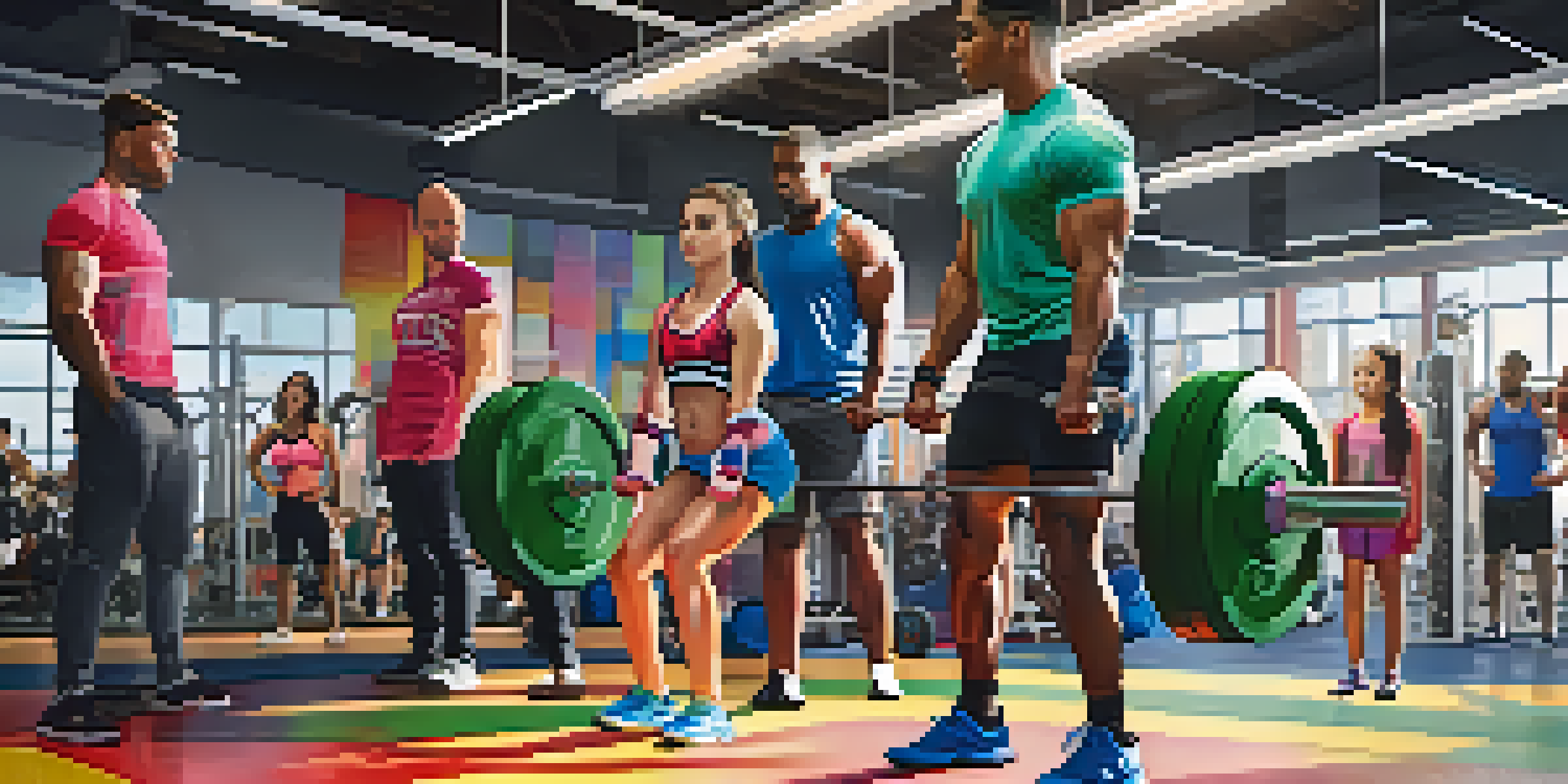Building Strength: Powerlifting Programs for Youth Athletes

Understanding Powerlifting for Youth Athletes
Powerlifting is a strength sport that focuses on three main lifts: the squat, bench press, and deadlift. For youth athletes, engaging in powerlifting can build not just physical strength but also mental resilience. It’s important to understand that powerlifting, when done correctly, can enhance athletic performance across various sports.
Strength does not come from physical capacity. It comes from an indomitable will.
However, safety must be a priority, especially for younger athletes whose bodies are still developing. Proper technique and guidance are crucial to prevent injuries and ensure effective training. With the right approach, powerlifting can be a fantastic addition to a young athlete's training regimen.
Moreover, powerlifting teaches discipline and goal-setting. As young athletes learn to lift heavier weights, they also learn the value of hard work and persistence. This blend of physical and mental growth is what makes powerlifting appealing to many youth athletes.
Benefits of Powerlifting for Young Athletes
One of the major benefits of powerlifting is its ability to improve overall strength, which is fundamental for any sport. Increased strength can lead to better performance in activities like running, jumping, and throwing. Additionally, powerlifting helps in building muscle mass, which can enhance an athlete's power and endurance.

Powerlifting also promotes better body mechanics and posture. As athletes learn the proper techniques for lifting, they develop a greater awareness of their body movements. This awareness can translate to improved coordination and agility, essential skills in any athletic endeavor.
Powerlifting Builds Strength and Resilience
Engaging in powerlifting helps youth athletes develop both physical strength and mental toughness, enhancing their overall athletic performance.
Lastly, powerlifting can boost an athlete's confidence. As they progress and achieve new personal records, they gain a sense of accomplishment. This newfound confidence can positively impact their performance in other sports and even in academic pursuits.
Key Components of a Youth Powerlifting Program
A well-structured powerlifting program for youth athletes should include several key components: proper warm-ups, strength training, technique development, and recovery. Warm-ups are crucial to prepare the body for lifting and to prevent injuries. Dynamic stretches and mobility exercises are often included to enhance overall flexibility.
The only way to prove that you’re a good sport is to lose.
Strength training should focus on the three main lifts, incorporating progressive overload to ensure continuous improvement. This means gradually increasing the weight or intensity of the exercises as the athlete becomes stronger. It's important to balance this with accessory exercises that target different muscle groups to promote overall strength.
Finally, recovery is an essential aspect that athletes often overlook. Adequate rest, nutrition, and hydration play a vital role in muscle recovery and growth. Incorporating recovery strategies into the program helps youth athletes stay healthy and perform at their best.
Safety Considerations for Young Powerlifters
Safety is paramount when it comes to powerlifting, especially for youth athletes. Proper supervision by trained coaches can significantly reduce the risk of injury. Coaches should focus on teaching correct lifting techniques and ensuring that athletes are using appropriate weights for their skill level.
Another key safety consideration is the importance of listening to one’s body. Young athletes should be encouraged to communicate openly about how they feel during and after workouts. This awareness can help prevent overtraining and injuries that may arise from pushing too hard too soon.
Safety is Crucial for Young Lifters
Proper supervision, technique, and open communication about feelings during workouts are essential to prevent injuries in young powerlifters.
Lastly, it’s crucial to instill a sense of respect for the sport. This includes understanding that powerlifting is not about competing with peers but rather about personal growth and improvement. Teaching young athletes to have a healthy mindset towards competition can foster a lifelong love for strength training.
Creating a Supportive Training Environment
A positive and encouraging training environment can significantly impact a young athlete's experience in powerlifting. Coaches, parents, and peers should foster a culture of support where athletes feel comfortable making mistakes and asking for help. This supportive atmosphere promotes learning and growth.
Incorporating group training sessions can also enhance the experience for youth athletes. Training with peers can motivate them to push their limits while fostering camaraderie. The shared experience of overcoming challenges together can build lasting friendships and a sense of community.
Moreover, celebrating milestones—no matter how small—can boost morale and motivation. Whether it’s achieving a new personal best or mastering a lift, recognizing these accomplishments creates a sense of pride and encourages athletes to continue striving for improvement.
Nutrition and Recovery for Young Powerlifters
Nutrition plays a critical role in the performance and recovery of young powerlifters. A balanced diet that includes ample protein, carbohydrates, and healthy fats can support their training needs. Proper nutrition not only fuels workouts but also aids in muscle recovery, enabling athletes to train effectively.
Hydration is another vital aspect that should not be overlooked. Young athletes should be educated about the importance of staying hydrated before, during, and after workouts. Dehydration can lead to fatigue and decreased performance, so encouraging consistent water intake is essential.
Nutrition Supports Performance
A balanced diet and proper hydration are vital for young powerlifters to fuel their workouts and aid in muscle recovery.
Additionally, incorporating recovery strategies such as stretching, foam rolling, and adequate sleep can enhance overall well-being. Teaching young athletes the value of recovery can help them maintain their training intensity and reduce the risk of injuries, leading to long-term success.
Inspiring the Next Generation of Powerlifters
Inspiring young athletes to embrace powerlifting can have a profound impact on their lives. Sharing success stories of athletes who have transformed through powerlifting can motivate youth to pursue their own strength goals. Relatable role models can make the sport more appealing and accessible to young people.
Moreover, creating opportunities for youth to participate in powerlifting competitions can ignite their passion for the sport. Competitions provide a platform for athletes to showcase their hard work and gain valuable experience. This exposure can further inspire them to set higher goals and work towards achieving them.

Lastly, fostering a culture of inclusivity is essential. Powerlifting should be seen as a sport for everyone, regardless of their background or experience level. Encouraging diversity within the sport can enrich the community and inspire even more young athletes to try their hand at powerlifting.